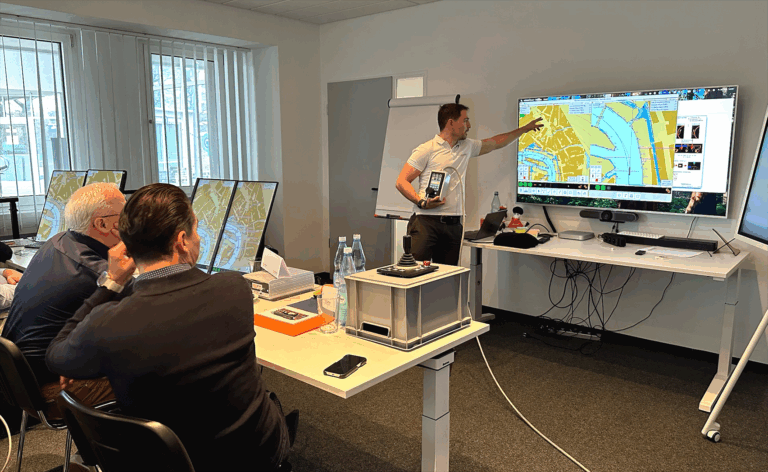|

🛳️ 🧑💻 Cast off on the NMK

A quick FernBin update
The National Maritime Conference (NMK) in Bremen impressed exhibitors and visitors alike. It showed a promising chapter in the development of inland navigation, where state-of-the-art technology and competent institutions and companies came together to shape the future of the maritime industry. As a partner in the FernBin project, we from Argonics were part of a live demonstration that presented the current status of the project.
What is FernBin?
FernBin is a ground-breaking project that logically develops inland waterway transport by allowing ships to operate remotely. This approach, supported by assistance systems, is intended to counteract the shortage of skilled skippers and enable the efficient use of smaller ship units for innovative logistics concepts.
FernBin has set itself ambitious goals, which are primarily aimed at increasing operational efficiency, reducing CO2 emissions and raising safety standards in inland navigation. Through automation and real-time data analysis, the project strives for a future in which ships navigate the waterways with the highest precision, minimizing human intervention and maximizing operational efficiency.
The project involves a wide range of partners, including maritime technology innovators, research institutions and government agencies. Further information on the project sponsors and partners can be found here: https://www.fernbin.de/konsortium/ Argonics and Argonav have supplied key components for the assisted remote control: The track guidance system used (argoTrackPilot) and our own autopilot (argoPilot) were used, as well as Argonav's ECDIS (argoRadarPilot).
Live demonstration at the NMK in Bremen
The current status of FernBin was impressively conveyed by a live demonstration at the NMK - here participants were able to experience remote-controlled navigation at first hand. The operation shown at the remote control stand was almost too good - not all visitors seemed to believe that this was not a simulation but a live demonstration. Switching between the captain on board and the remote control worked just as smoothly as the display of the current navigation and radar displays.
Outlook - What are the next steps?
The progress of the project marks a decisive moment for inland navigation. Remote control should become the standard and not remain the exception. What's next for the FernBin project?
Research is now being carried out on the next step: the adaptive navigation system. It will react dynamically to the surrounding traffic and process traffic information in real time. Later, it will support the remote-controlled skipper by forecasting and visualizing the space required for the encounter of ships and showing the skipper possible options in a “predictive mode”. This enables the skipper to navigate his ship safely and reliably depending on the behavior of other road users.

